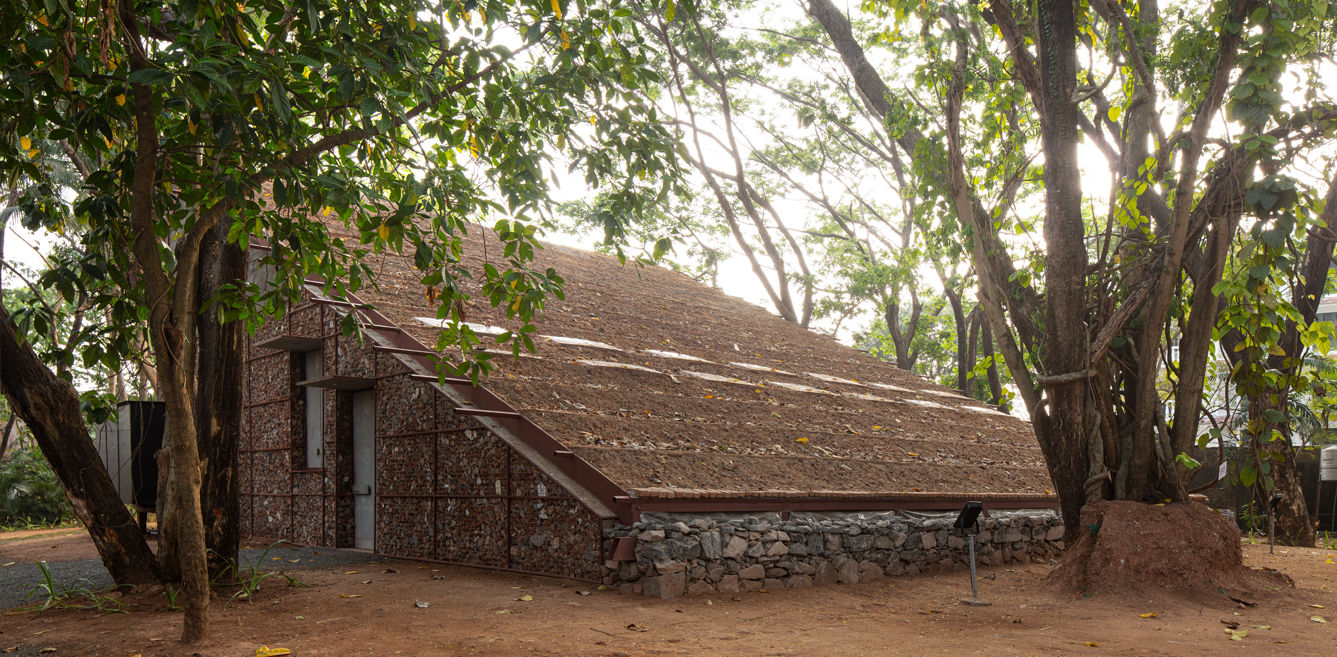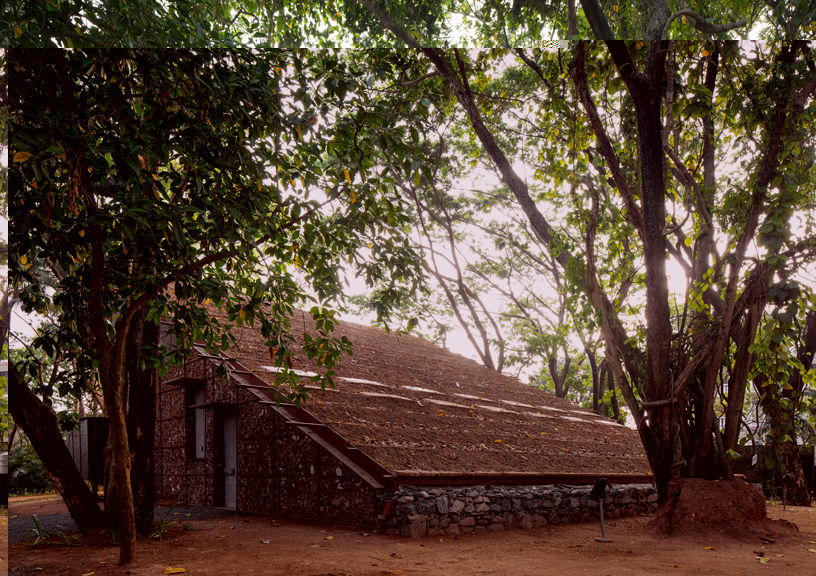



“In spite of the colossal demolition and the debris it creates, building activity continues to remain indispensable. Architectural thinking must evolve around sustainability, recycling materials and resources,” muses Samira. Built on a dual narrative, the pavilion unveils itself as a large space under a singular roof that touches the ground. It takes cues from the ingenious roofs of Kochi and is an honest admission of materials and methods of making buildings.
You may also like: The Kumaon: Paying homage to the nature and local traditions
Metaphorically, The Container displays two chronicles that are tied to each other—one, the debris from ruthless demolition, and another of the poetics of construction. By implementing materials like construction debris from nearby sites, waste granite from quarries, coir, fishing nets, geogrid, brick bats, cement and wire mesh, The Container celebrates the lesser known and unconventional building fabrics.
Setting a brilliant example of conservation, its temporary structure stands without any concrete footings, so that it can be dismantled to retrieve all of its material that may be reused or reassembled elsewhere. “It is this material and method that we want to celebrate, and bring forth the pain, risk and challenges that are faced in the manifestation of an architecture, an outcome we deem beautiful,” concludes Samira.
On the night of 1 April, Mumbai revealed her rebellious, punk-inspired side as Vivienne Westwood…
The architectural landscape of Rajasthan is steeped in a rich tradition of historic masonry, reflecting…
Are you a corporate employee spending 10+ hours in an ordinary cubicle that's fused in…
Modern Indian homes are no longer bound by their physical vicinity. They have outgrown our…
Häcker Kitchens, a brand synonymous with quality and innovation, has a rich legacy that spans…
In this home designed by Sonal R Mutha and Aniketh Bafna, founders and principal designers…